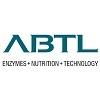Explore all the information on
Enzymes in poultry nutrition
Enzymes are proteins involved in all anabolic and catabolic pathways of digestion and metabolism. Digestive enzymes are categorised as endogenous or exogenous. Endogenous enzymes are produced by the animal and exogenous enzymes are administered from outside. Enzyme supplementation decreases nutrient loss through excreta, reduces diets nutritional levels, improves nutrient availability; thus, enhances production efficiency and profitability. In addition, exogenous enzymes hydrolyse non-starch polysaccharides, increase the usage of feed energy, reduce negative impacts of non-digestive residues on digesta viscosity, and improve gut microbial ecosystem. Cellulase, glucanase, pectinase, xylanase, galactisidases, phytase, non-starch polysaccharides degrading enzymes, amylase, lipase, cellulase, and protease are the most common enzymes used in poultry feed.
Dr. Rose Whelan, Senior Manager Animal Physiology Research at Evonik Animal Nutrition. sums up the main points of her presentation titled `Effects of dietary sulfur amino acid levels on growth performance and intestinal antibody production in broilers challenged with Eimeria spp´., during ESPN 2019 in Poland....
Comments : 10
Recommendations: 10
Introduction Summer and Disease The mercury is soaring high throughout the country, and it seems there is no respite soon. High environmental temperature leads to heat stress. Heat stress can lead to various harmful impacts on livestock productivity, such as high animal morbidity, mortality, and reduction in growth performance, directly resulting in dramatic economic losses to the livestock industry. Heat stress and transportation or shifting from EC shed to the...
Comments : 2
Recommendations: 2
Introduction The application of exogenous enzymes in fibrous diets has been found to increase nutrient utilization and subsequently improve the growth performance of broilers [1, 2]. However, the response of different enzymes is not consistent, and it could vary based on the types of ingredients present in the diet. Among the exogenous enzymes, xylanase is commonly used to improve nonstarch polysaccharide (NSP) degradation in wheat-based diets, but it is also increasingly being used...
Comments : 0
Recommendations: 1
1. Introduction Exogenous xylanase (XYL) has been routinely used in poultry diets to hydrolyse nonstarch polysaccharides (NSP) and improve the feeding quality of fibre-rich diets, including wheat [1]. The beneficial effect of XYL in wheat-based diets is mainly attributed to the reduction of digesta viscosity, improving digestion and absorption of nutrients, dietary energy availability and subsequent growth performance of broilers [2,3]. In layers, XYL has been assessed as...
Comments : 0
Recommendations: 1
Aaron Cowieson (DSM) discusses microbiome research in poultry nutrition and the feed additives considered, during this Engormix interview....
Comments : 1
Recommendations: 3
Two experiments evaluated the addition of an exogenous sfericase protease in broiler diets. Experiments were run (Exp1 and Exp2) with 1,848 and 2,100 one-day old male chicks being allocated into 84 floor pens with 14 replicates of 22 and 25 birds each, respectively. The studies were conducted in completely randomized designs. In Exp1, Standard diets were formulated with energy and AA at marginally lower levels than usual by the Brazilian integration such that broilers were expected to grow...
Comments : 0
Recommendations: 0
Deoxynivalenol (DON) is one of the most common trichothecenes mycotoxins, and is a natural occurrence mycotoxin produced by Fusarium graminearum . DON also is known as vomitoxin due to its strong emetic effects after consumption and causes animals’ vomit. DON occurrence in food and feed represents more than 90% of the total number of samples, and it is a potential marker of the occurrence of other mycotoxins.
The occurrence of mycotoxins originates from before and after...
Comments : 1
Recommendations: 3
High energy and protein prices and volatility of grain, fat, and oilseed meal markets have resulted in shifts in feed ingredient use and increased application of a wide variety of exogenous enzymes to reduce feed cost. However, the choice of enzyme and subsequent application of matrix values are often done with little regard of the substrate levels in the diets that are being targeted. This discord between feed substrates and the class of enzymes being applied...
Comments : 4
Recommendations: 0
Avian influenza virus (AIV) belongs to Orthomyxoviridae family and is characterised by containing negative-sense, single-stranded RNA genome of 8 segments that encode for 10 structural and at least 9 nonstructural/regulatory proteins. Hemagglutinin (HA) and neuraminidase (NA) that are the most abundant and immunogenic surface protein, and are involved in virus entry and exit from the cell. There are 18 hemagglutinin and 11 neuraminidase subtypes that are known to exist in the nature, and all...
Comments : 0
Recommendations: 0
Summary In order to investigate the benefits of a multi-enzyme complex (RovabioTM Max) containing carbohydrolases and phytase activities on the performance and bone mineralization of broilers fed corn-soybean meal based diets, 2268 male Ross broiler chicks were allocated to 9 dietary treatments: a positive control diet formulated to be adequate in nutrients and four reduced nutrient diets (NC), with gradual decrease on AME,...
Comments : 4
Recommendations: 0
.jpg&w=3840&q=75)

(Mandarin) Strengthening Pellets for Better Feed Performance
Suggested link
ADPHOS phytate solutions deliver exceptional phosphorus release in combination with outstanding thermostability, reliability and consistency...
Comments : 4
Recommendations: 3
I INTRODUCTION Phytate is ubiquitous in plant-based feed ingredients and phytase is routinely supplemented in poultry diets. Moreover, there is considerable interest within the chicken-meat industry in increasing dietary inclusion rates of crystalline or synthetic amino acids to develop reduced protein diets. An increasing array of both essential and nonessential non-bound amino acids is becoming commercially available at inclusion costs that are becoming increasingly...
Comments : 0
Recommendations: 0
I. INTRODUCTION Phytic acid salts or phytate constitutes up to 70 % of the phosphorous (P) stored in cereal grains and oilseed meals and this P is poorly utilized by poultry due to limited endogenous phytase secretion (Ravindran, 1995). Therefore, exogenous phytase is routinely used in poultry feed worldwide to address the issue of optimizing P utilization and mitigating the negative impact of dietary phytate on bioavailability of other nutrients i.e. minerals and AA...
Comments : 0
Recommendations: 1
I. INTRODUCTION Soybean meal (SBM) is the primary protein source in broiler diets. Although SBM is highly digestible, it contains glycinin, protease inhibitors, and antigenic proteins that are indigestible and can cause intestinal damage and impair immune functions resulting in suboptimal growth performance (Pan et al., 2016). With the development of commercially available protease, protein and amino digestibility is greatly improved allowing the control of...
Comments : 0
Recommendations: 0
Introduction Since the major part of costs in poultry production is related to feed, minimizing this part of the costs which depends on feed ingredients is very important. On the other hand, phosphorous is usually one of the expensive nutrients in poultry feed. Therefore, the amount of nutrients in feed ingredients, especially available phosphorus, has a very important role in lowering the cost of feed. The main form of storage of phosphorus (P) in plant feedstuffs is phytate...
Comments : 0
Recommendations: 1
Introduction Phytate: The latter part of the past century witnessed drastic increases in the size of poultry facilities for better efficiencies and lower production cost. Concurrently, fast-growing, or high producing breeds of poultry were developed and raised to utilize a plant-based feeds in their ration. But one of the major drawbacks of this ration is that it contains high phytate concentration making phosphorus unavailable to poultry, thus increasing the...
Comments : 2
Recommendations: 1
Dr. Junaid Syed, Assistant General Manager and Head of International Business, Rossari Biotech Limited, talks about the company´s initiatives for 2023 and the importance of Enzymes in Animal Production....
Comments : 1
Recommendations: 3
Introduction Feed ingredients and manufacturing are expensive components of integrated poultry production, sometimes reaching 70% of total operational costs. Fortunately, the added costs of manufacturing poultry feed improve feed efficiency and poultry performance. The performance benefits from feeding pelleted diets results in a positive return on investment, making it a common practice in broiler and turkey production. Improving the quality of pellets further enhances poultry...
Comments : 1
Recommendations: 3
Supplemental xylanase may be used in diet formulation to reduce diet cost, mitigate the antinutritive effects of arabinoxylans, increase energy utilization, and improve growth performance of broilers. Xylanase has been shown to partially depolymerize arabinoxylans, which can reduce intestinal viscosity, reduce nutrient encapsulation, and modulate the intestinal microflora of broilers (Choct et al., 1999; Bedford, 1995; Bedford and Cowieson, 2012). In addition, products of xylanase...
Comments : 1
Recommendations: 0












.jpg&w=3840&q=75)



.jpg&w=3840&q=75)












